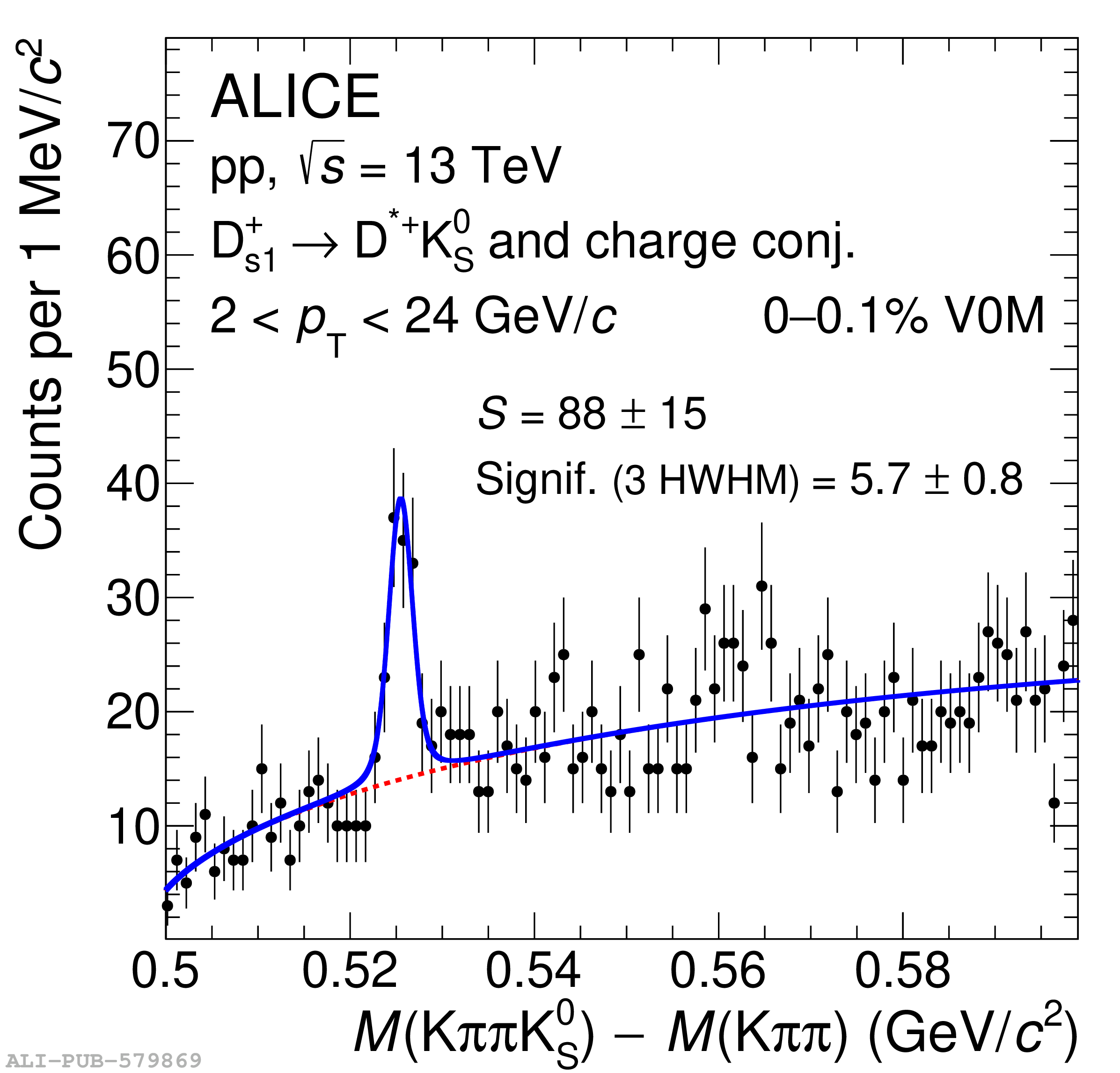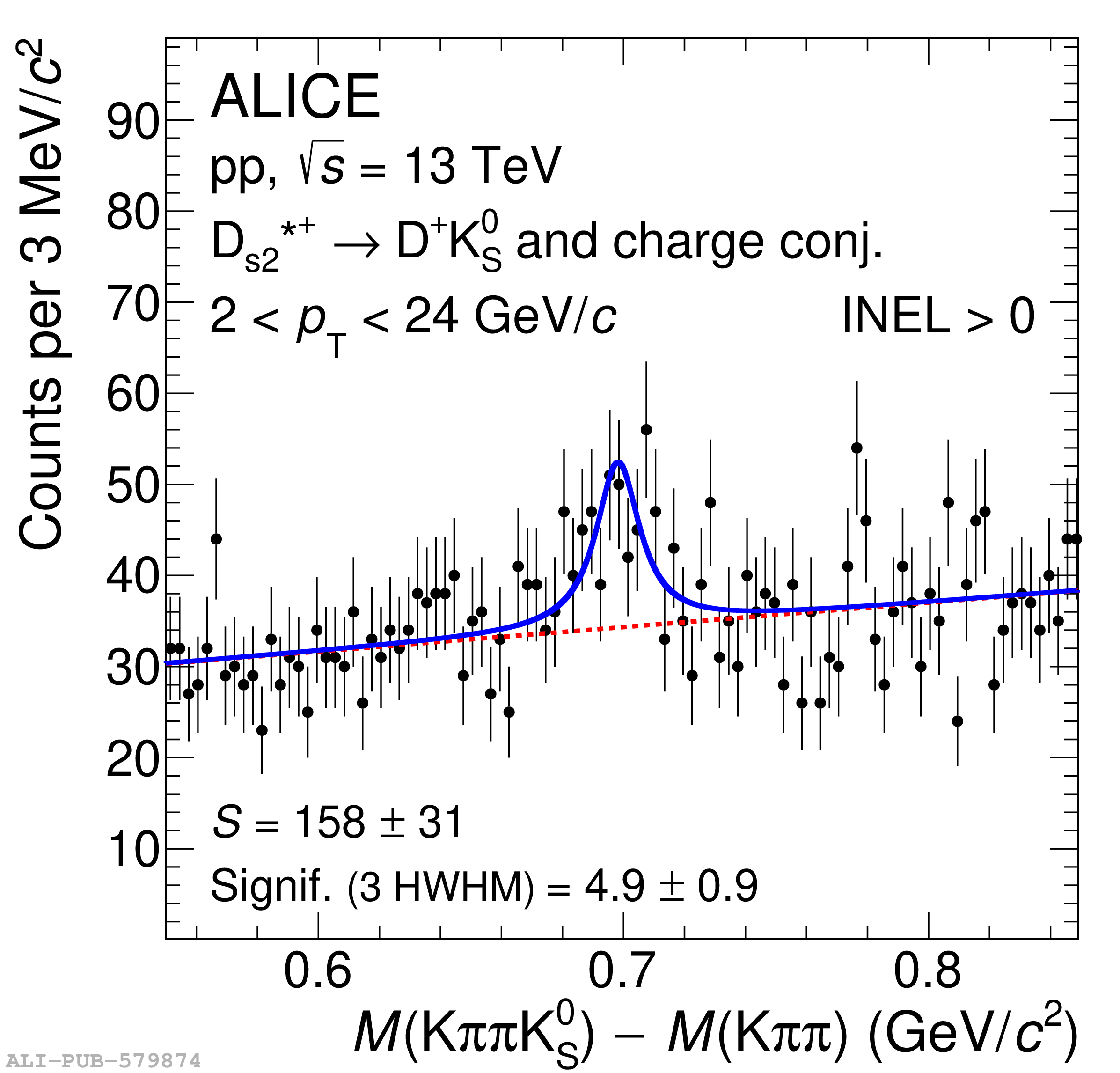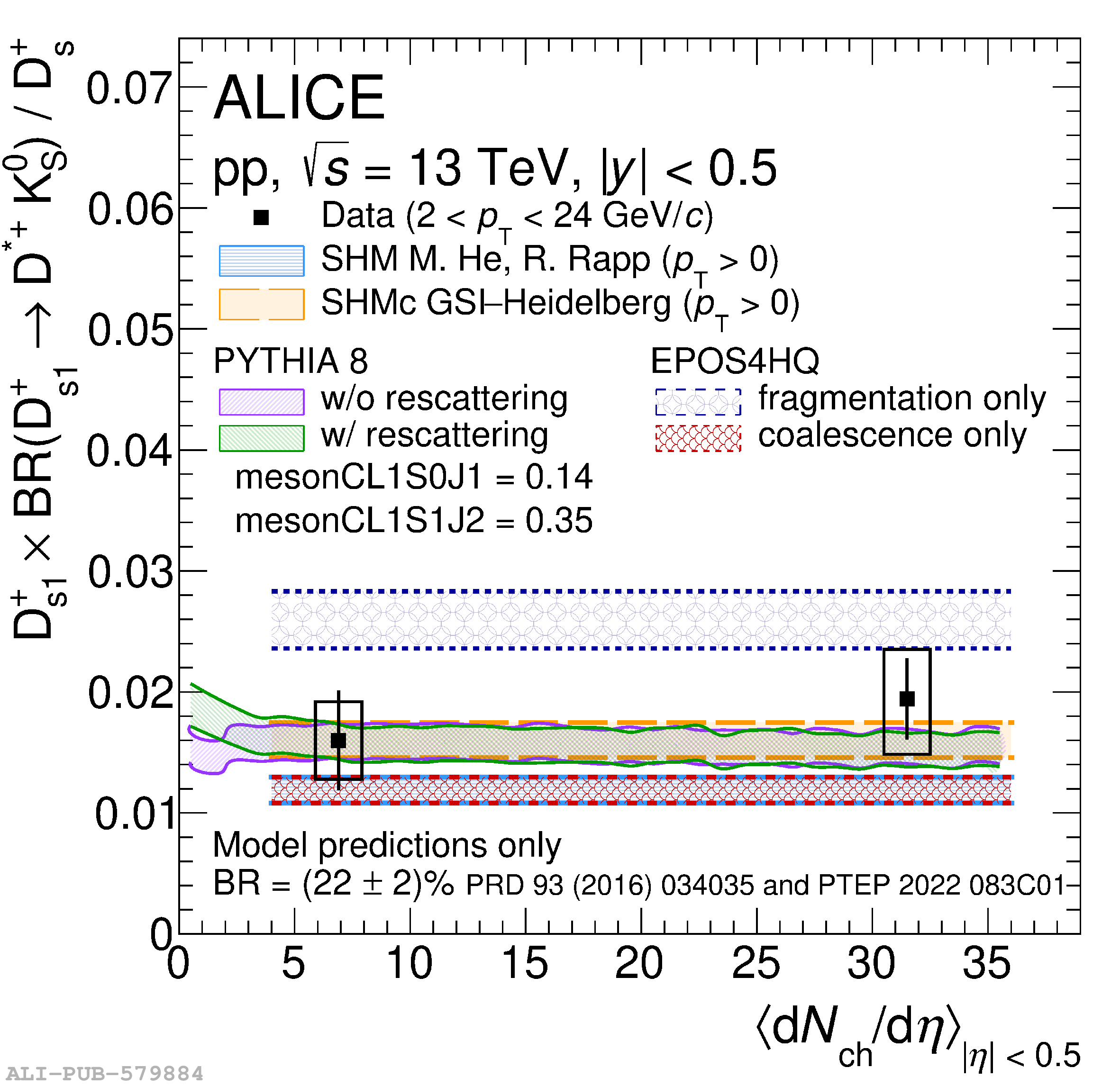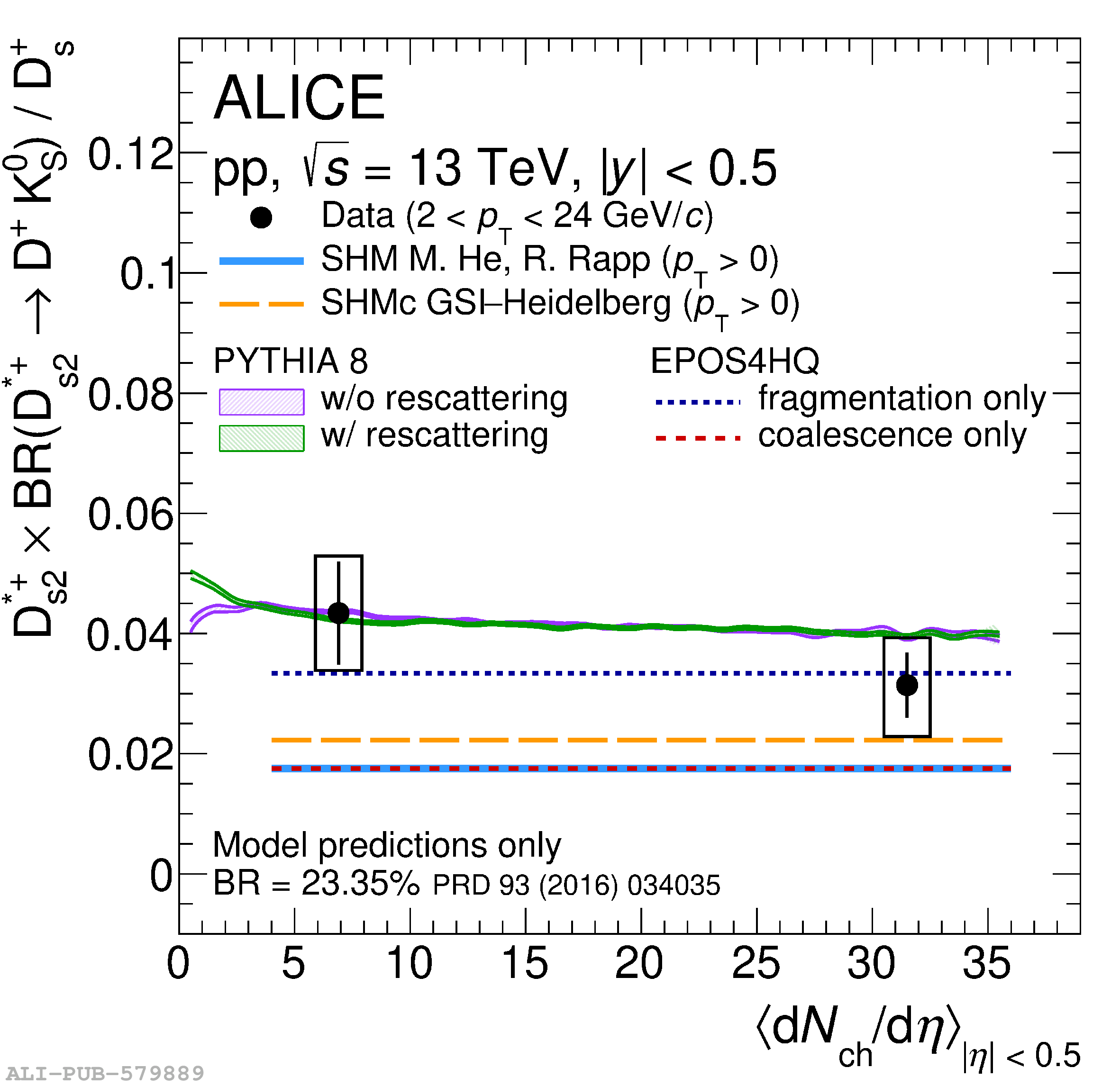The production yields of the orbitally excited charm-strange mesons $\mathrm{D_{s1}(1^{+})(2536)^+}$ and $\mathrm{D_{s2}^{*}(2^{+})(2573)^+}$were measured for the first time in proton-proton (pp) collisions at a center-of-mass energy of $\sqrt{s}=13$ TeV with the ALICE experiment at the LHC. The $\mathrm{D_{s1}^+}$ and $\mathrm{D_{s2}^{*+}}$ mesons were measured at midrapidity ($|y|<~0.5$) in minimum-bias and high-multiplicity pp collisions in the transverse-momentum interval $2<~p_{\rm T}<~24$ GeV/$c$. Their production yields relative to the $\mathrm{D_{s}^{+}}$ ground-state yield were found to be compatible between minimum-bias and high-multiplicity collisions, as well as with previous measurements in ${\rm e}^{\pm}$p and ${\rm e^+ e^-}$ collisions. The measured $\mathrm{D_{s1}^+/D_{s}^{+}}$ and $\mathrm{D_{s2}^{*+}/D_{s}^{+}}$ yield ratios are described by statistical hadronization models and can be used to tune the parameters governing the production of excited charm-strange hadrons in Monte Carlo generators, such as PYTHIA 8.
Phys. Rev. D 111, 112005 (2025)
HEP Data
e-Print: arXiv:2409.11938 | PDF | inSPIRE
CERN-EP-2024-233
Figure group







